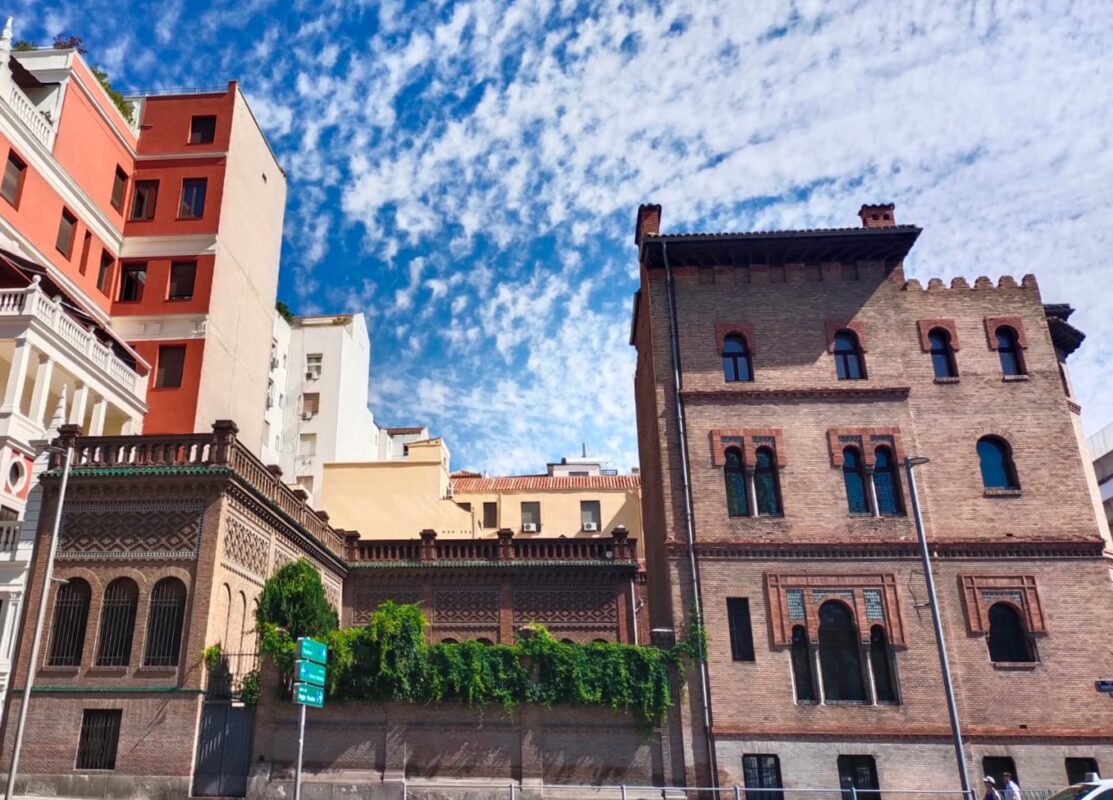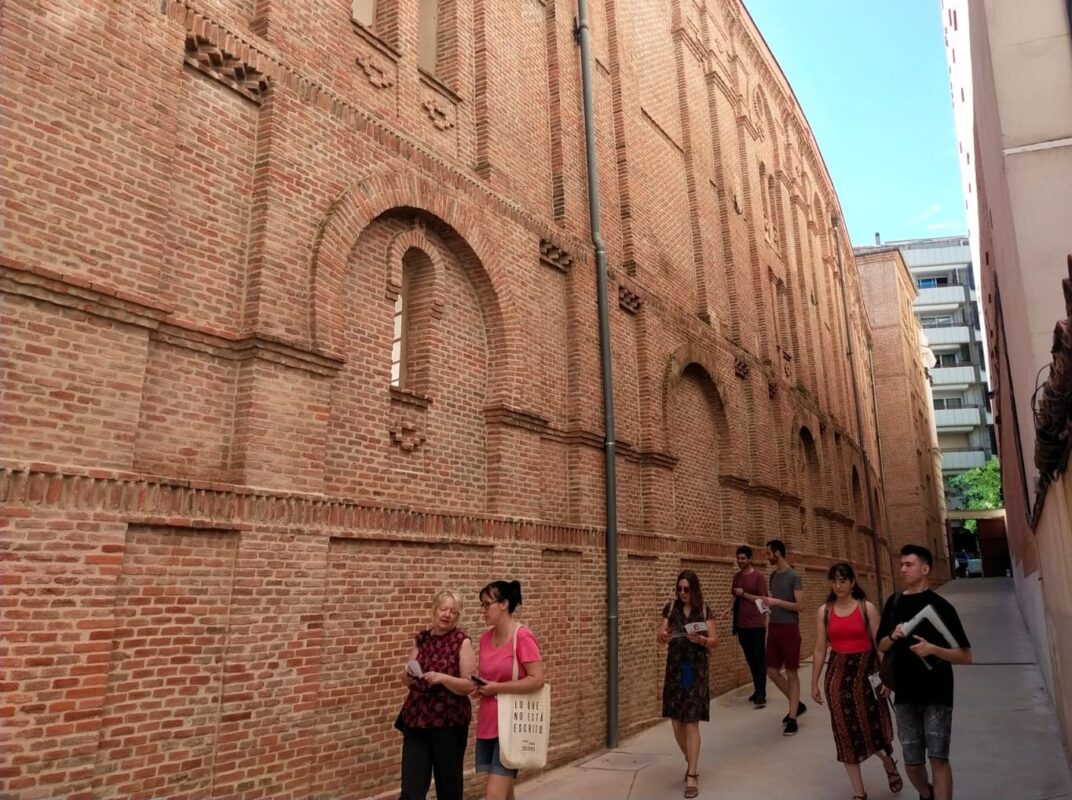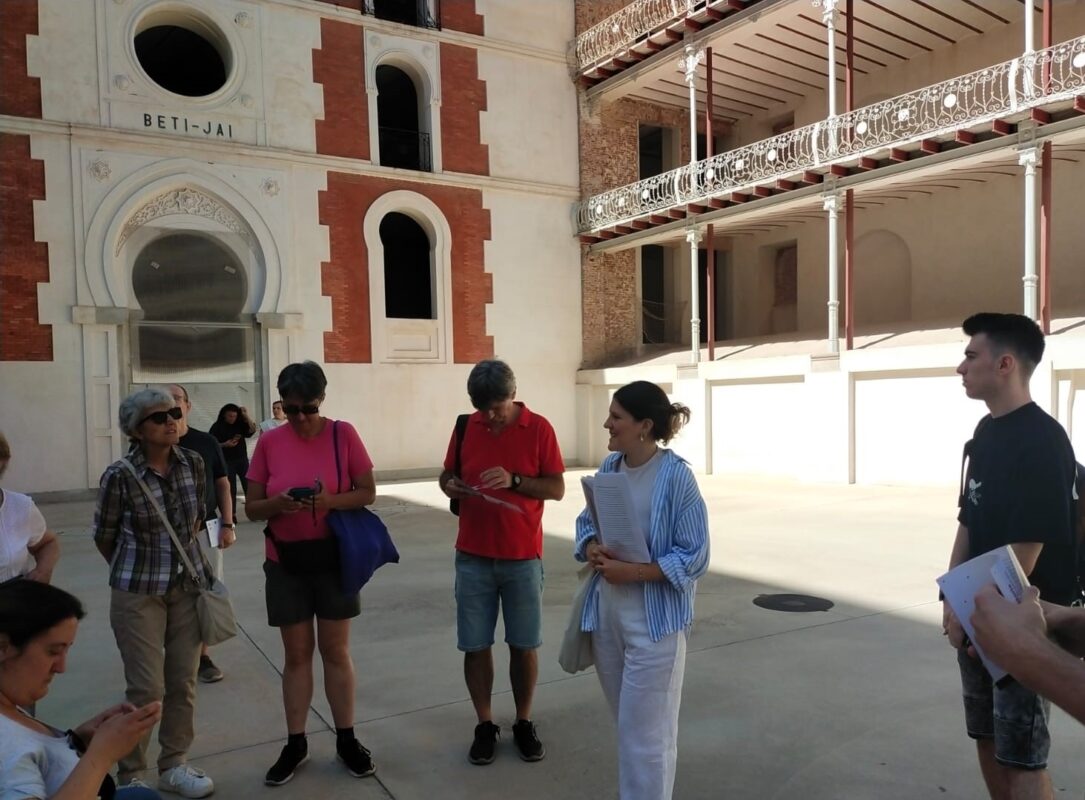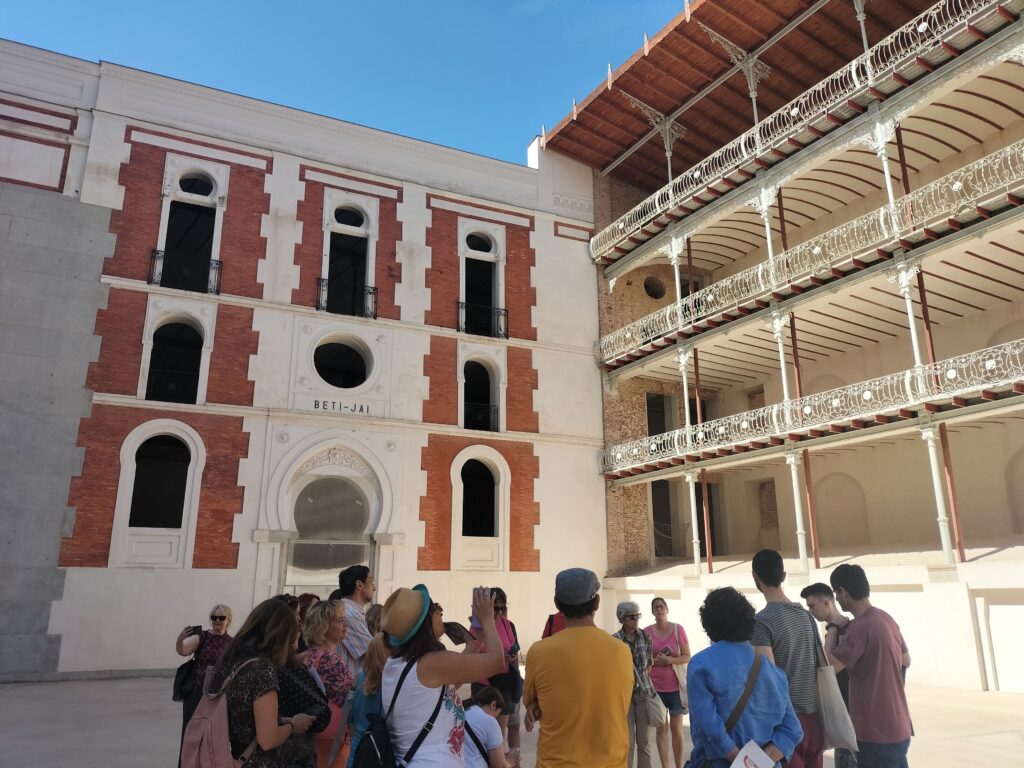Articles, Communications, Mayrit hoy
The ‘Neo-Mudejar’ of Chamberí, al-Andalus from the contemporaneity
Article author: Aurora Ferrini
Date of publication of the article: 31/07/2024
Year of publication: 2024
Article theme: Activities, Al-Andalus, Art, Madrid.
On the occasion of the celebration of the Fiestas de Nuestra Señora del Carmen de Chamberí in 2024, organised by the Chamberí District Council (Madrid City Council), the Centre for Studies on Islamic Madrid (CEMI), a project of the Islamic Culture Foundation (FUNCI), has been part of the programme, offering the guided tour ‘The “Neo-Mudejar” of Chamberí: a view of al-Andalus from the contemporaneity’.
The emergence of a ‘national style’
The District of Chamberí arose as a result of the Ensanche Norte (1860), an urban planning project that sought to solve the problems of isolation and health that affected the population, which was limited by the enclosure of Madrid (built in the 17th century). These problems led to the settlement of outsiders and people from the city itself, both rich and poor, beyond the modern walls; this resulted in the construction of numerous buildings with different functions (residential, civil, social, sporting, cultural…) to provide shelter and services to all these people.
A “new” architectural trend, popularly known as “neo-Mudejar”, was being imposed at that time. This arose in a context where various processes were taking place inside and outside the national territory. These events would directly correlate in the forms chosen to build the new suburbs.
As Eloy Martín [1] points out:
‘The evolution of architecture in the 19th century was marked by the crisis of Neoclassicism and the consequent search for a new style to replace it. […] This must be contextualised in the political, economic, and cultural situation of the time. In particular, the formation of the European nation-states […] and the almost contemporaneous imperialist expansion. All this in a climate marked first by the emergence of Romanticism and then Orientalism.
These circumstances encouraged the imperialist states to get to know the dominated territories. Spain also ended up participating in the colonial distribution of Islamic Africa and strengthening its presence in the north of the continent. This renewed interest, in the case of Spain, was marked by the centuries of Islamic rule and the survival of Andalusi culture in the peninsular territory, even after the expulsion of the moriscos (1609-1614). In this way, national identity was inextricably linked to the Andalusi and, therefore, to the Islamic.

From Mudejarism to Islamic Neo-Medievalism
In 1859, José Amador de los Ríos gave a speech that would change our way of perceiving and referring to the art produced after the conquest by the Christian kingdoms of the territories that, until then, had been part of al-Andalus. Amador de los Ríos called “Mudejar” a hybrid art, “where to the architectural structure of Romanesque or Gothic tradition was added a decoration of Andalusi heritage; a whole for the whole that makes up the Mudejar personality and, in addition, has a working method and materials”[2]. A key point in understanding the choice of this word is the notion of authorship, i.e., the identity of the architects of the work, who, traditionally, have been said to be Mudejar master builders. “Mudejar” comes from the Arabic term mudaŷŷan, meaning ‘domesticated’, or ‘allowed to remain’. In other words, the Mudejars were the Muslims who, after the conquest, remained in lands where Christianity now prevailed.
This is not the place to discuss or define what we understand or do not understand by “Mudejar art”, a subject still under debate and in continuous revision. The purpose of this article is to present, briefly, the circumstances that led to the adoption of this new architectural trend and its material reflection in the streets of Chamberí.
As we pointed out earlier, at the end of the 19th century, we witnessed the consolidation of European states, among them Spain. It was a fact propitiated by imperialist anxieties that led to contact with the colonized otherness and, therefore, to a definition of national identity as opposed to the colonized. In this contextual framework, when they had to choose a “pre-eminently” Spanish style, they found the answer in “Mudejar”: a “Christian” art with forms that distinguished it from the rest of European countries and that, at the same time, referred to an “exoticized” and “orientalizing” past.
Manuel García Morente sums it up as follows:
“What is foreign is both Muslim and foreign. What is proper is, therefore, both Christian and Spanish”[3]. This shows why it was necessary to Christianize the “Mudejar”. In short, the Spanish identity was constituted in opposition to the Moor, to the Muslim, but not entirely to the Islamic.

Thus we come to “neo-Mudejar”, although, in order not to keep on repeating such a debated term, we will refer to it as “Islamic neo-medievalism”[4]. This is nothing more than the recovery and reformulation of the so-called “Mudejar”, according to the new trends of the moment (modernism, eclecticism…). Popularly it has been distinguished by the massive use of brick, a material that in medieval times was not visible because it was plastered. The plaster was lost over time, revealing the skeleton of the architectural buildings. This disappearance of the plaster was also linked to the process of industrialization and its improvements in manufacturing. In other words, the exposed brick would correspond to a current conception and an altered perception.
The Islamic neo-medievalism of Chamberí
The irruption of the theorization of “Mudejar art”, the lower cost and improved production of brick, the need to build new housing, and the possibility of making buildings with intricate decorations easily and economically caused an explosion of buildings that were framed in this current. That is why, today, in Chamberí you can still see beautiful facades and rich interiors that drink directly from the Islamic or Andalusian tradition.
When the Center for Studies on Islamic Madrid was asked to participate in the Fiestas de Nuestra Señora del Carmen, we wanted to create an itinerary that, through the preserved architecture of the time, would deal with a subject of great complexity and, still, of current relevance.
The recognition of the contribution of Islamic culture to our own identity over time allows us to create new and more inclusive narratives and, therefore, an improvement in intercultural and interreligious coexistence in our neighborhoods.

On July 13, Aarón Felices del Arco and Enrica Zuffi guided a visit to a sample of the most representative buildings of this “Neo-medieval” current in the Chamberí district. Among these are the building of the Valencia de Don Juan Institute, whose interior houses an extensive collection of Islamic or Andalusi objects and documents, and the parish of San Fermín de los Navarros, where the Islamic imprint is undeniable. On the other hand, it was possible to visit the gardens of the Sorolla Museum and to enter the recently restored facilities of the Beti Jai Fronton. In two hours, the history of these places was explained, as well as the different elements that make them fit into this construction movement. The aim of this activity was to transmit to the attendees the complex process of building a style and the architectural richness of this district, which often goes unnoticed in everyday life.
Notas
[1] Martín Corrales, Eloy. «Siglo y medio de neoarabismo y neomudejarismo en España (1848-2009)». In La invención del estilo hispano-magrebí: presente y futuros del pasado, Anthropos., 200-2024, 2010. https://dialnet.unirioja.es/servlet/libro?codigo=758701.
[2] Gilsanz Calvo, Alfonso. «Un arte ¿“mudéjar”?», 2021. https://madridislamico.org/un-arte-mudejar/.
[3] Bravo López, Fernando. «Una España de sangre mora: las derechas y la herencia arabobereber». Al-Andalus y la Historia (blog), s. f. https://www.alandalusylahistoria.com/?p=3163
[4] For further information, see: Rodríguez Domingo, José Manuel. «El neomedievalismo islámico en la arquitectura madrileña», 2011. https://madridislamico.org/el-neomedievalismo-islamico/.


